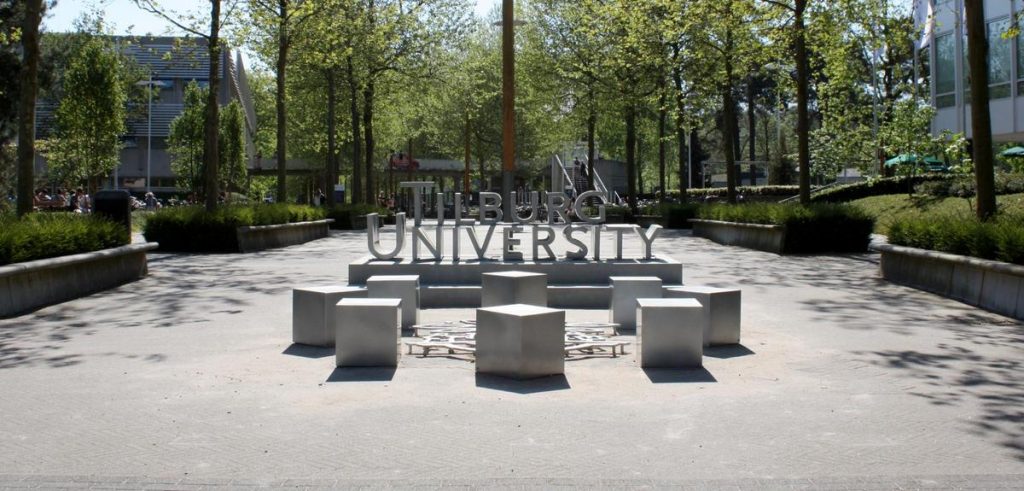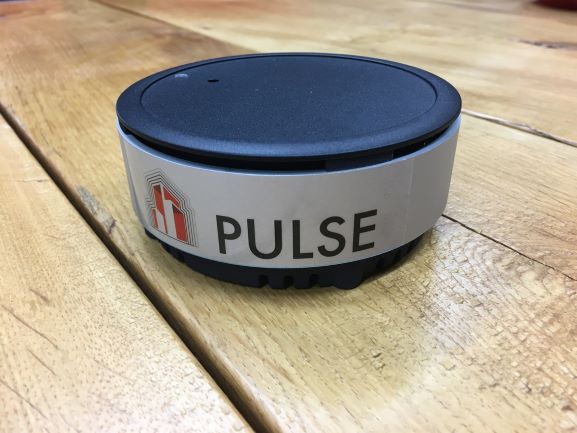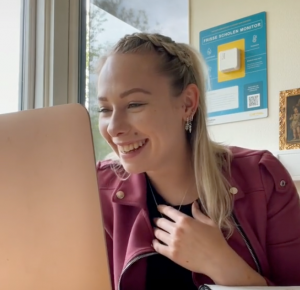PULSE Core answers Tilburg University’s questions
Tilburg University has an excellent building management system, but even here the indoor climate occasionally raises questions. With PULSE Core, SPIE Netherlands (formerly Strukton Worksphere) has the answers in its grasp.
The Tilburg campus is home to almost two dozen buildings of various ages, and technical project manager Jan Baartmans (Tilburg University) is responsible for management and maintenance in all of them. The university deliberately opted for a small-scale technical department, outsourcing operational management and daily maintenance to 5-10 technical specialists at SPIE Netherlands.
Even though the Priva building management system works properly and provides all kinds of information about the indoor climate, there are still occasional complaints. Opinions can differ about temperature and whether the indoor air is fresh or stale, and different people may interpret measurement data differently. To remedy this issue, the decision was made to roll out an extensive network of wireless comfort sensors in combination with PULSE Core.
Clear and independent
The university has its own sensors for measuring temperature, relative humidity and carbon dioxide levels, but with its next-generation sensors, Strukton can also monitor sound and light levels and forward the collected data to the comfort module of the Strukton Pulse Core platform. With this information, you can paint a much clearer picture of what is going on in a room and why people are complaining.
Baartmans: “Comfort levels are a key focus in our approach to monitoring, and PULSE Core automatically generates a very clear, independent, easily approachable and easy-to-understand report for us. The report also specifies which levels exceed certain pre-set limits and health and safety standards, but we usually fall well within these standards and rules.”
“When people come to us with OHS-related complaints, e.g. problems with their eyes, throat or mucous membranes, we perform technical measurements at their workstation. Sometimes, people who wear contact lenses may need a higher level of relative humidity than we are capable of offering. The measurements captured in PULSE Core allow us to see exactly what is and is not going right and where carbon dioxide levels or peak loads are just too high. The team can formulate recommendations based on the PULSE and if we know which range we need to target, we can go looking for an appropriate solution.”
“At the same time, the data also allow us to refute the idea that our climate system is behind some of the complaints in the workplace. For me, what matters most is that we have access to independent measurement data to compare to standards and health & safety recommendations. If something is not right, it has to be solved. Sometimes, humidity levels may fall within the limits set out in Health & Standards, but an Occupational Health expert will still tell us that they are too low for a particular user. When that happens, we explore ways to increase humidity locally or take some other targeted action.”

The surveys powered by PULSE mainly focus on comfort experienced by employees, as students tend not to complain and rarely stay in the same place for long. Comfort sensors have also been installed in archive rooms, where it is essential that the temperature and humidity stay constant. What’s more, they can be used to measure whether humidity levels have returned back to normal after a leak in a book archive, for instance.
Round discs
In practice, technical manager Marco van Bijnen and his Strukton team spend the most time working with the sensors. When surveying a room, he usually installs two units at a distance of approximately 1-1.5 m from the floor, one near a window and the other near a workstation. Van Bijnen: “The sensors look like round discs and we keep them in place for a few weeks, so that we can collect enough data to tell whether the complaints are justified. Regardless of whether the room is too warm or too humid, linking the comfort sensors with PULSE allows you to build a robust data set to analyse whatever you want.” Baartmans adds: “Curiously, we have found that people who know where the sensors are located will sometimes try to manipulate them.” However, PULSE can accurately detect potential tampering due to the wide range of data it collects. Van Bijnen continues: “These sensors also detect decibels and light, telling you exactly how much time people spend in the room.”
For Van Bijnen, the benefits of comfort sensors are crystal clear. “They really provide detailed insight into temperature levels. We also have Priva coms sets that measure and control temperature, but as soon as you put an obstacle in the way, the temperature changes. These sensors are just considerably more accurate. The coms set will still allow you to track which employees sign into a room, while PULSE enables you to track their behaviour.”
Often, it takes PULSE to get to the bottom of really tricky complaints. Van Bijnen: “A while back, a complaint came in about a reception area that turned out to be caused by an employee’s electric heater. When another employee came in the next morning, the room was still far too warm, all because of the residual heat produced by the heater. Our system had nothing to do with it, which just goes to show that even when the system is functioning perfectly, user behaviour can still throw off the balance.
Answering questions with comfort sensors and the new PULSE platform

“PULSE also tracks the outdoor air temperature and incorporates it into a clear report with understandable graphs and actionable advice if necessary. In this case, it was a matter of telling people that the system was not to blame. It should also be noted that the reception area in question was a rather small space in an old building, making it difficult to cool down. To combat the issue, the decision was made to relocate the reception area.”
Deep
Another complaint involved an overly stuffy lecture room, in which PULSE showed that temperature and carbon dioxide levels tended to rise rapidly. Ultimately, we found that there were twice as many chairs in the room as intended, based on how the system had been configured. Van Bijnen is pleased to note that the connection between PULSE and Priva has now been improved, allowing for a much ‘deeper’ view of certain rooms, as well as detailed insight into historical data about mechanical systems such as heating, cooling and humidity systems, i.e. not about electrical systems. The value of Strukton PULSE, Van Bijnen explains, has also already been demonstrated in buildings with air humidification systems. “There have been several cases in which the Priva data suggests that humidity levels are A-OK, while the sensors picked up an anomaly. When we sent a mechanic to check up on the situation, they discovered that one of the steam humidifiers was switched off. Priva should have detected the issue, but fortunately we had PULSE as a back-up.” PULSE has also given Baartmans a better understanding of certain complaints: “We had lots of complaints about a particular room that just wouldn’t heat up. When we looked at how much energy we put into the room, it became clear that we hadn’t configured the system optimally.”
Acting on intelligent data
“In the future, PULSE will allow us to configure the system even better,” Van Bijnen continues. “Now they are still two separate systems, with Priva forwarding information about faults and outages to PULSE. PULSE then logs in to see what’s going on, but doesn’t yet retrieve intelligent data to act immediately.” “That is something we are now working on with Strukton,” Baartmans concludes. “Creating a link between Priva and PULSE would allow you to automatically improve ventilation by monitoring limits, which would create better opportunities for predictive maintenance or climate control based on the weather forecast. You could, for instance, start cooling the building at night. Priva and PULSE can complement each other nicely.”
This article was taken from Duurzaam Gebouwd Magazine #48, which was also published digitally. To read this free magazine on your device (phone, tablet or laptop), visit our knowledge base.
Share Message
See also

Sensor technology at Carmel College
How comfortable and healthy are our classrooms for our students? How can we gain more insight? And how can we improve air quality? With these

